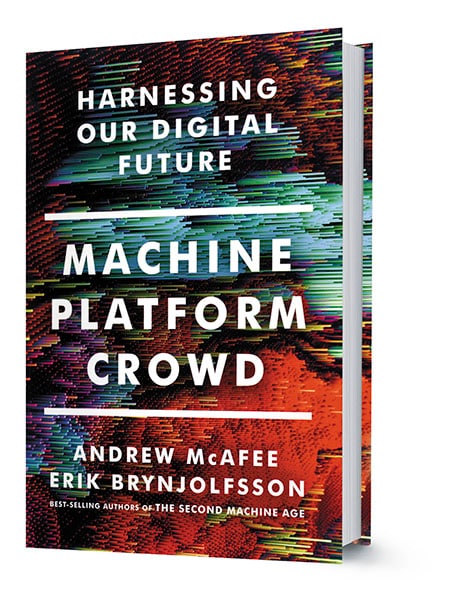
Machine, Platform, Crowd: The changing relationship between mind and machine in an AI world
How AI is redefining the relationship between the human mind and the machine

Borrowing from Charles Dickens, these are the best of times, these are the worst of times. The ‘standard partnership’ that formed 20 years ago between the human mind and machine, where computers performed routine tasks and freed people to use their judgement to make decisions—according to authors Andrew McAfee and Erik Brynjolfsson, in their book Machine, Platform, Crowd: Harnessing our Digital Future—is ending. This is the case because, the authors argue, people’s gut instincts embody unconscious biases and lead to sub-optimal business decisions.
Citing studies to substantiate the point, Brynjolfsson and his colleagues at the Massachusetts Institute of Technology modelled publications data and influential writing by scholars to predict their tenures in operations research. The model agreed with the decision of tenure committees 70 percent of the time. Where they disagreed, the model predicted names of scholars who published more research in the future than the ones selected by the tenure committees.
In another study, psychologist William Grove looked at 50 years of published comparisons between clinical and statistical predictions in psychology and medicine. Of these, they found 136 studies ranged from predicting IQ to diagnosing heart disease; in half the cases, the experts’ opinion matched that of machines.
If a way can be found to remove human biases—which biases the algorithm and, hence, the decision—and improve decision-making by machines, what of humans then? It took 20 years for computers to move from payroll processing to diagnosing diseases. In the interim, Google is building 100 percent self-driven cars, Fukoku Mutual Life with IBM’s Watson (Artificial Intelligence or AI technology) has part-automated health insurance claim processing, and Microsoft has a speech recognition system better than humans.
While this may suggest AI will soon take over human jobs in all domains, the pace and sectors affected will depend on how AI evolves, skills shortages and salary levels. And yet, our sentience, the need to belong and ability to experience the world through our senses, distinguishes us from machines. That is not changing.
So, what are the lessons for India? Well, we have already incorporated technology-providing platforms into our lives: Witness the 7 lakh drivers working with Ola, of which the two-wheeler taxi drivers, in addition, use their phones to access apps of companies that provide them with floating jobs of ecommerce deliveries. Similarly, AI could help rural doctors diagnose diseases, or technicians get diagnoses from distant clinics; teachers can use AI to upgrade learning outcomes. For India, at present, machine learning seems to offer more opportunities than threats.
Over the medium term, it could be a different story. That’s where India needs to rapidly educate/upskill its population to enable them to get jobs. If most jobs are in danger of getting outsourced to AI—if most medical diagnoses are to be outsourced—do parents need to spend a fortune on medical degrees for their children? Our window of opportunity, then, is the next 20 to 30 years.
Machine, Platform, Crowd
Authors: Andrew McAfee and Erik Brynjolfsson
Publisher: WW Norton & Company
Price: $28.95
Pages: 402
(This story appears in the 30 November, -0001 issue of Forbes India. To visit our Archives, click here.)
X




